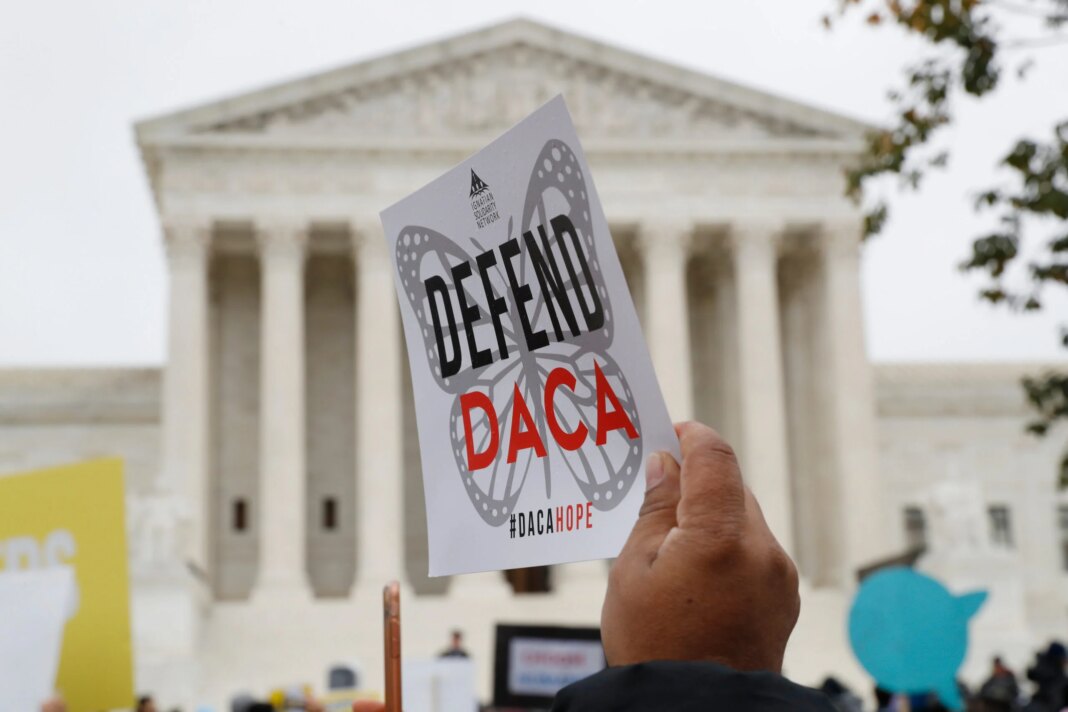### Background on DACA
The Deferred Action for Childhood Arrivals (DACA) program has been a lifeline for many individuals brought to the U.S. as children. Initiated during the Obama administration, DACA offers a two-year, renewable reprieve from deportation for eligible individuals, alongside the ability to work legally within the United States. However, it’s crucial to note that DACA does not confer legal status; it merely provides temporary protection through renewable permits.
### Recent Developments
Recently, the federal government has indicated a willingness to reopen applications for DACA in light of a legal proposal presented before U.S. District Judge Andrew S. Hanen. This comes after years of uncertainty following rulings and legal challenges that had halted the acceptance of new applications since 2019.
### Eligibility Criteria
To qualify for DACA, applicants must meet specific requirements: they must have entered the U.S. as children before their 16th birthday and be under the age of 31 as of June 15, 2012. Additionally, candidates must not have been convicted of any felonies or significant misdemeanors. It’s a finely tuned set of criteria designed to ensure that the program serves those who have integrated into American society despite their precarious legal status.
### The Texas Exemption
The ongoing legal battle in Texas adds complexity to the situation. While the federal government is poised to accept new applications, Texas has filed a lawsuit against DACA, which could exempt residents from receiving work permits, even if their applications are accepted. This carve-out is a significant point of contention that illustrates the varied approaches to immigration policy across different states.
### Proposed Legal Framework
In the latest legal discussions, DOJ attorneys have proposed a framework that allows for nationwide acceptance of DACA applications, albeit with restrictions for Texas residents in terms of work authorization. Advocates for DACA recipients have suggested a transitional wind-down period, allowing Texas residents to maintain their work permits for one additional renewal cycle. These recommendations reflect a pragmatic approach to navigating ongoing legal complexities while still protecting DACA recipients where possible.
### Cautious Optimism Among Advocates
Advocates appear cautiously optimistic, refraining from celebratory declarations until an official ruling is made. Current estimates suggest that while approximately 533,000 individuals are already benefitting from DACA, there are potentially 1.1 million more who may be eligible, as estimated by the Migration Policy Institute in 2023.
Michelle Celleri, Legal Rights Director for Alliance San Diego, emphasizes the importance of preparedness. She encourages potential applicants to start assembling necessary documents in anticipation of a favorable outcome. Such proactive steps can help ensure a smooth application process once the green light is given.
### Future Considerations
The government’s recent filing hints at the possibility of further evolutions in DACA beyond this case. Juliana Macedo do Nascimento, a spokesperson for United We Dream, highlights the need to consider broader immigration trends in conjunction with DACA developments. With ongoing reports of detentions and deportations affecting existing DACA recipients, advocates stress the importance of viewing this situation within the larger context of U.S. immigration policy.
### Next Steps
The timeline is still unfolding, with the federal government and DACA representatives scheduled to submit further responses in October. Judge Hanen’s decision will be keenly awaited, as it will determine not only the fate of countless individuals but also set a critical precedent for immigration policy in the United States. While uncertainty remains, communities are gearing up for possible changes that could profoundly impact lives across the nation.



